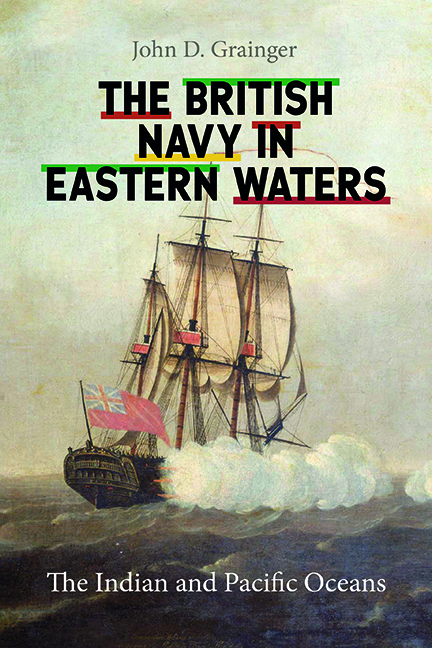1 - The Company’s Early Struggles (1600–1625)
Published online by Cambridge University Press: 26 May 2022
Summary
The great circumnavigation voyage of Francis Drake between 1577 and 1580 took him across the Pacific to the Spice Islands, then across the Indian Ocean to South Africa, and north along the length of the Atlantic to triumph and a knighthood at Greenwich, with his one remaining ship ballasted and loaded with gold and spices. This was the first seaman-like view of the Pacific and Indian Oceans by an English captain. The first voyage of James Lancaster between 1591 and 1594 went in the opposite direction, south along the length of the Atlantic, round the Cape of Good Hope, into the Indian Ocean and across to Indonesia, returning much the same way. It produced no wealth, and came back with a small sickly crew in a ruined ship, though Lancaster did gain a knighthood eventually. Drake had lost four out of his original five ships one way and another; Lancaster's voyage started with three ships and ended with one. And yet, despite the contrast in their immediate fortunes, there was no follow-up to Drake's voyage, other than some looting expeditions which were less than successful, and Cavendish's circumnavigation, which was useful and profitable. Lancaster's voyage, on the other hand, was the origin of one of the most remarkable and successful commercial ventures in world history, for it led to the formation of the East India Company.
Drake had followed Magellan's route to Patagonia, then through the Strait which his predecessor had discovered, north along the Spanish South American Pacific coast, looting and burning towns, capturing ships, and filling his hold with stolen wealth. This part of the voyage was in relatively familiar territory by this time, as his activities showed. If he is to be credited with an exploratory voyage, it was only after Mexico that he found anything new. He careened his ship somewhere on the upper Californian coast, possibly near San Francisco Bay (which he missed), and from there struck out across the Pacific for the Spice Islands, which he located by an admirable feat of navigation. He started this Pacific crossing further north than the Spanish ships usually did, and sailed by the trade wind route, briefly calling at the Palau Islands, and then at Mindanao in the Philippines. He made no wholly new discoveries in that island-littered Ocean.
- Type
- Chapter
- Information
- The British Navy in Eastern WatersThe Indian and Pacific Oceans, pp. 7 - 26Publisher: Boydell & BrewerPrint publication year: 2022



